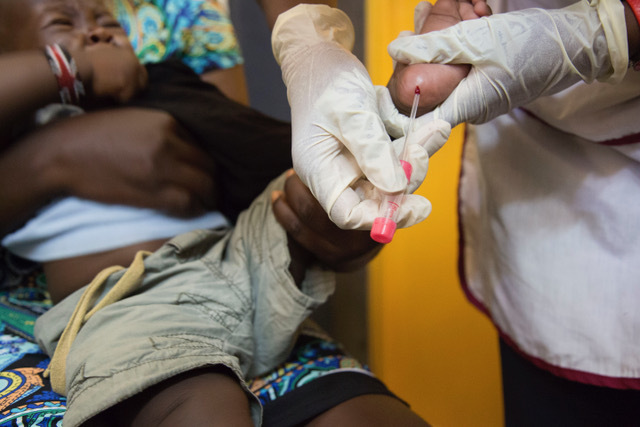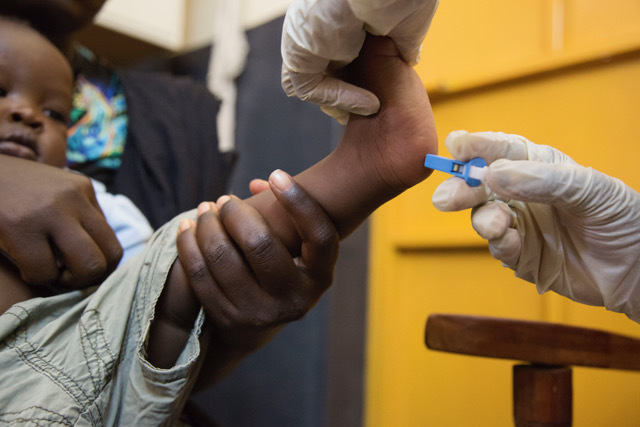Currently, many infected infants are not started on treatment early enough leading to higher mortality rates. Studies on Mortality of infants born to HIV-infected mothers in Africa published on the lancet journal have shown that without antiretroviral therapy (ART), a third of infants who acquire HIV as a result of mother to child transmission of HIV will not reach their first birthday, and half will not reach their second birthday. With timely initiation of ART, a child born with HIV can live a healthy normal life.
The test that Akiru’s baby will receive today is not usual. She is among the first to receive new-to-market, Point of Care Early Infant Diagnosis (POC EID) technology that ensures that infants are tested at a health facility, and quickly receive their test results in a few hours so that infants who are HIV-positive infants can be enrolled on treatment quickly.
The technology is funded by Unitaid and implemented by the Elizabeth Glaser Pediatric AIDS Foundation (EGPAF) in partnership with the Ministry of Health through a four year (2015-2019) grant and is being supported in Homa Bay and Turkana counties.
Early implementation data on POC EID testing that started in August 2017 shows that 99.4 percent of parents or caregivers at testing sites receive their results within 30 days as opposed to only 20 percent when using conventional EID. Over 85% of those who tested at a site with POC EID machine received their results on the same day. The initiative has also set up systems for health facilities that do not have the equipment to send their samples for testing and receive results quickly- often in under two days

POC EID technologies are easy to use and do not require placement in specialized laboratories to perform the test. The machine analyses blood and produces a test result in about 50-120 minutes. Infants who test positive can immediately be initiated on treatment before leaving the facility, said Dr. Collins Otieno, POC EID Project Manager.
In a small clinic in the same town Ester Apas, 30, brings her six month old for a HIV test. She has travelled from Kanamkemer Location Julouk Village, 3 kilometers from Lodwar Town. For her, the long walk to the clinic did not deter her spirit. Her other children had been tested for HIV using the conventional laboratory system and she had to wait for almost two months to get back the results.
She says that she was very stressed waiting for the results and now looks forward to learning about her youngest child’s HIV status on the same day.
“The POC EID Technology is revolutionary as it improves access to HIV diagnostic testing for infants necessary to save lives, said Dr. Eliud Mwangi, EGPAF-Kenya Country Director. “We aim to expand it to more counties once the pilot phase is over.”

Kenya is one of nine high HIV prevalence countries in Africa to pilot this technology with EGPAF’s support including Cameroon, Cote d’Ivoire, Lesotho, Mozambique, Rwanda, Swaziland, Zambia and Zimbabwe.




